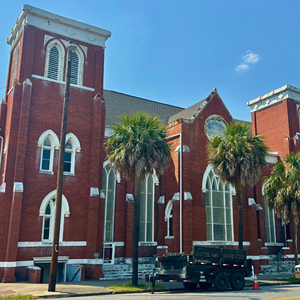I’ve said it before and I’ll say it again. There are two kinds of people in this world: those who think police officers should have unlimited authority, and those who think police powers should be limited.
If that sounds strange to you, I would agree. It’s a strange thing to say.
But in 20 years of journalism I’ve learned that the one issue that provides the most real insight into a person’s actual worldview — not necessarily the one they present to the world — is the issue of a police officer’s use of force, and that person’s initial reaction to it.
This reaction is unique because it is completely unpredictable and completely non–ideological. Political party, race, income, profession, gender, and age help you not at all in gauging how someone will react to an incident of possible police brutality.
Some of the most left–wing liberal people I know support, in knee–jerk fashion, the most egregiously excessive use of force by police, without question.
Some of the most right–wing, conservative Republicans I know are immediately skeptical anytime police depart from protocol.
You never can tell how people will react until the issue actually comes up, and that makes for some particularly fascinating and volatile commentary.
In case you’ve been living under a rock for the past few weeks, the biggest local story since St. Patrick’s Day has been the now–infamous cellphone video of a Savannah police officer breaking up an altercation on Broughton Street March 17.
I say “local story” referring to its origin; of course by now it has been picked up by media across the spectrum, from the Atlanta Journal-Constitution to the huge sports blog Deadspin.
First, the usual caveat: The vast majority of local police officers are professional, by–the–book public servants who do invaluable work in keeping the community safe. I believe this to be true regardless of my feelings about the officer’s behavior in the video.
I’ll spare you the (literally) blow–by–blow, minute–by–minute account, since most of you have already seen it or are aware of it. The behavior in question is the officer’s actions toward a particular young woman in the altercation, summarized as follows:
First he uses his baton (what we used to call a “nightstick,” which is a much cooler term, don’t you think?) to strike her legs. Then he pepper–sprays her in the face.
Then — and this is in many minds where the incident becomes more than garden–variety — he apparently grabs her by the back of her pants and sweeps her legs out from under her, whereupon she face–plants directly into the road.
For a moment she appears not to move, and at this point I would remind you that Natasha Richardson died from a similar head trauma. While the young woman appears to be OK as of this writing, it is by no means a given that such a blow to the head would be trivial.
The officer in question was placed on administrative leave pending an internal affairs investigation. A layman’s view of the video doesn’t reveal any point at which the officer seems to be seriously threatened by the woman, but I suspect the investigation will focus more closely at that, as it should.
As I expected from previous experience, comments about the event quickly took the form of people of all walks of life and all political persuasions and all socio–economic backgrounds insisting that the police officer was not only in the right and shouldn’t be questioned, but also that if anything the girl was lucky something worse wasn’t done to her.
Wow!
Of course, the whole idea of a lone police officer on the scene acting as judge and jury — and carrying out his own sentence to boot — is completely anathema to the Bill of Rights of the U.S. Constitution.
Indeed, casual and unsanctioned brutality by uniformed people toward common citizens was part of what inspired the Bill of Rights in the first place.
No matter. A very large percentage of your fellow citizens believe passionately that a police officer should have virtually unlimited powers of life and death at the scene of an incident, and those actions should be applauded, not questioned.
A common variant of this is the point of view that being a police officer is such a stressful job that they should be permitted to crack under the strain every so often.
Leaving aside the obvious lame ineffectiveness of that defense in front of a jury, let’s do a hypothetical exercise:
What if this particular police officer “cracked under the strain” on Broughton Street and, say, not only did the full takedown maneuver but then shot the girl in the back?
Would that be an acceptable form of cracking under the strain? What is an acceptable form of cracking?
Indeed, is there any area, other than perhaps a frontline combat soldier in the midst of a firefight, where anyone is ever given explicit permission to “crack under the strain?”
The old jokes about mailmen “going postal” come to mind....
Even more disturbing to me — in an exasperating, what–is–this–world–coming–to sort of way — is the amazingly prevalent inability of so many adults to cope with holding the following two thoughts in their head at the same time:
A) The young people in question fighting in the middle of Broughton Street were probably breaking laws and deserve to face potential punishment from the legal system;
B) The police officer probably used excessive force and should also face potential punishment.
It is stunning how many of your fellow citizens don’t have the basic critical thinking skills to see that BOTH of these things can be true, that it isn’t an either/or question.
The fact that the young people in question certainly seemed to be guilty of several misdemeanors and should have their day in court to face judgment has nothing to do with the possible use of excessive force by that police officer on Broughton Street.
We investigate acts of possible police brutality not based on the gradation of activity by a potential lawbreaker — especially a lawbreaker who seems to pose no real physical threat to the police.
We investigate acts of possible police brutality because the breaking of that social contract between American citizens and their constitutional right to due process — and that’s really what police misbehavior boils down to — is a blatant violation of what this country was founded on in the first place.
As if to cue a grimly sardonic joke, we received a press release from local police a few days after the incident, touting the fact that “20 new Tasers will hit the streets thanks to funds raised by the police foundation.”
Well, OK! Since we paid for them and all, let’s hope that training in the use of those Tasers is thorough and complete, and that they are used only as a last resort, not as a first option.
Otherwise the person in the next video may not get up from Broughton Street under their own power.































